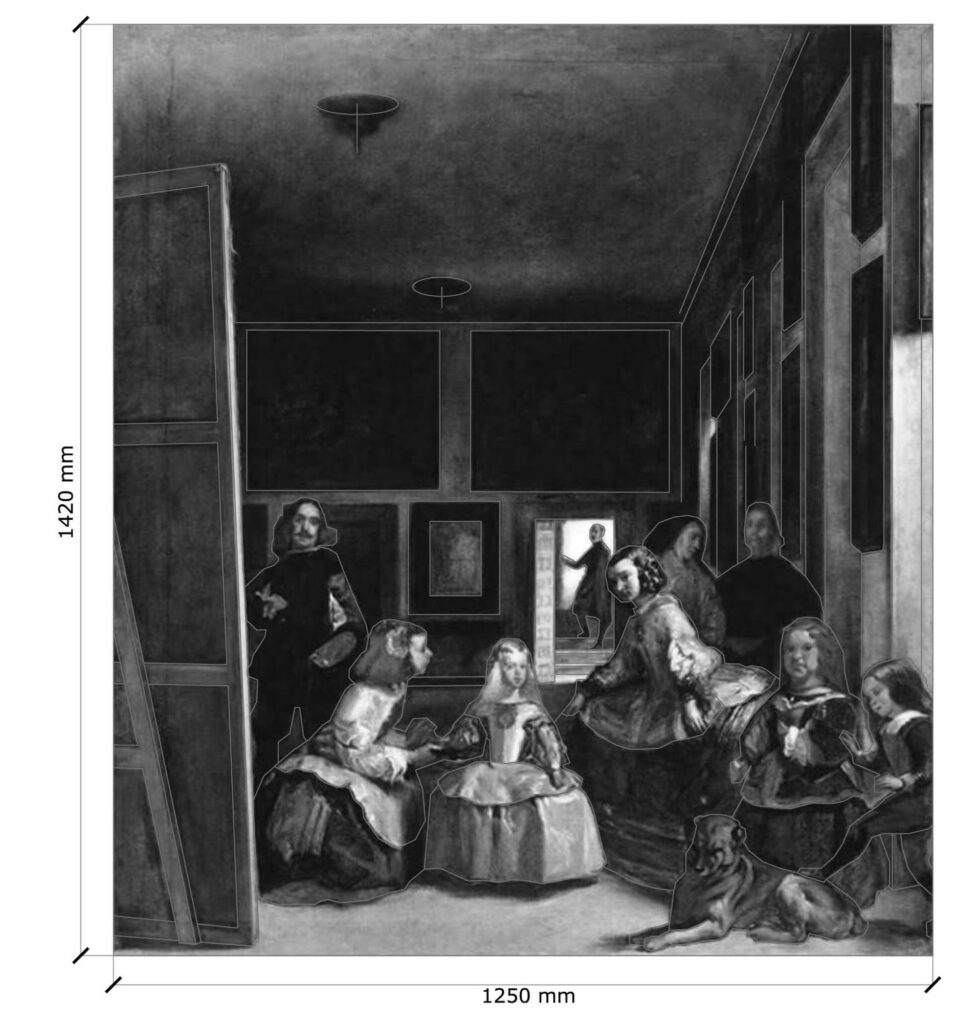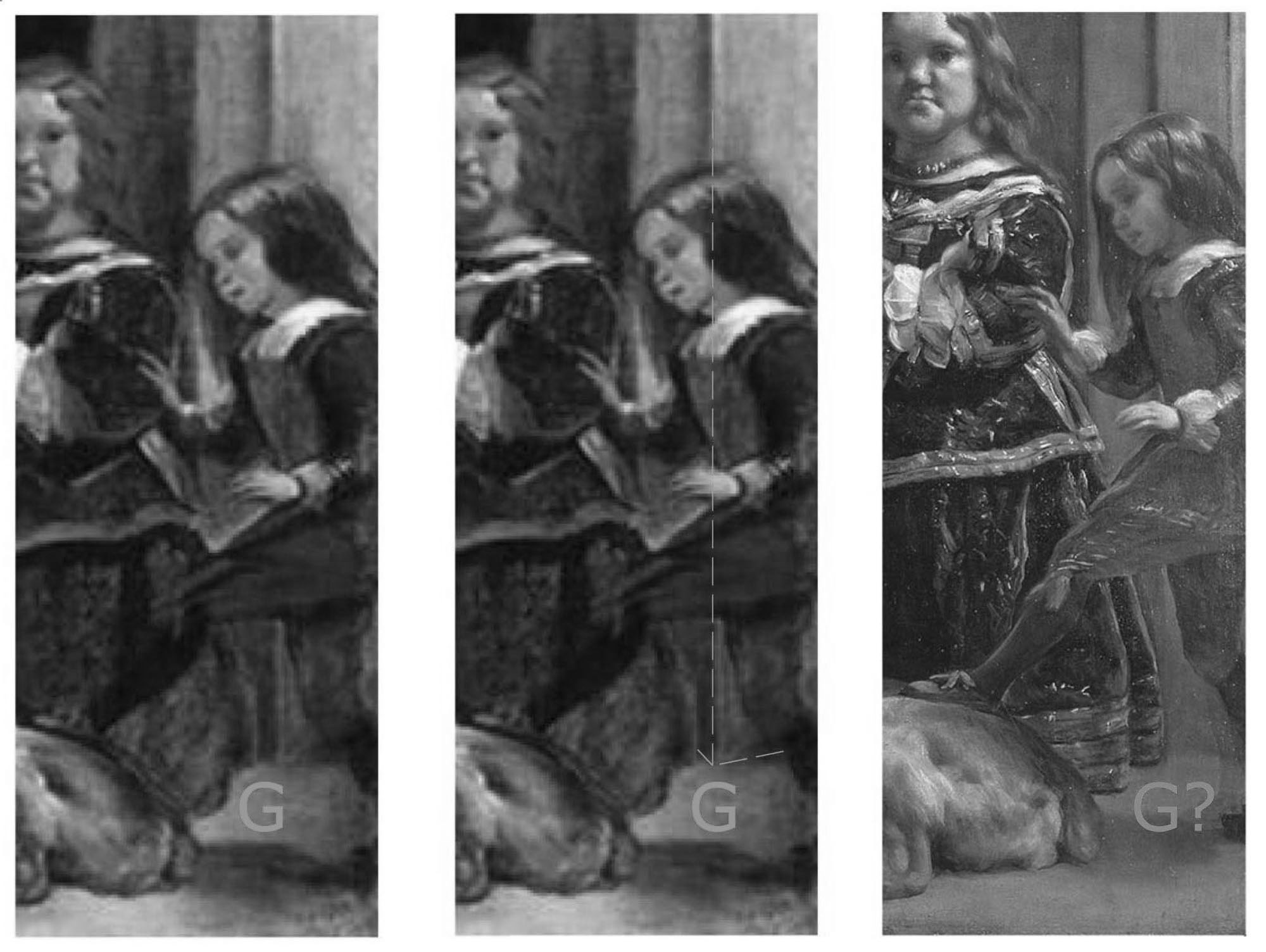A small painting hidden away in obscurity for over 100 years that was thought to be a copy of Las Meninas by Spanish artist Diego Velazquez was not only painted by him but also used like a pictographic negative to help the Grand Master create one of the most influential portraits in the history of art.
Velazquez’s Las Meninas, which was painted in 1695 and is currently hanging in the Prado museum in Madrid, shows members of the Spanish Court with the Infanta Margaret Theresa at its centre.
But it’s complexities have made it one of the most widely discussed paintings in the history of art and now a Spanish historian has published research claiming to show once and for all that it was created using the image now on display at Kingston Lacy House, a National Trust stately home in Dorset.
Catalan professor Miguel Usandizaga, 66, a researcher at the Valles School of Architecture and the Polytechnic University of Catalonia in eastern Spain, said that far from being a copy, it was proof that the great painter had actually relied on modern technology rather than his reported genius in order to create Las Meninas.
The painting lay in virtual obscurity for 150 years before it was identified in 2013 by art historian Matias Diaz Padron as a “boceto or modeletto”, a first draft or sketch of Las Meninas by Velazquez, which he later reproduced on a larger scale.

At the time he was quoted after a 20-year study as saying that: “The quality of the painting in the version in Kingston Lacy is so high that it can only be from Velazquez. There is also such clarity in the brush strokes that it could not have been by a lesser painter.”
He was supported by the Spanish Royal Academy of Fine Arts, although the Prado Museum at the time insisted that the painting in the UK that have been bought by art collector William Banks in 1812 was simply a copy that had been painted by Velazquez’s son-in-law and pupil Juan Mazo.
However, now new research takes the ancient mystery a stage further by claiming that the UK painting is not only a work of art by the master himself, but was also actually the clue as to how he really created the masterpiece, whose use of mirrors and angles has had art critics arguing for generations as to its meaning.
Speaking to newsflash, professor Miguel Usandizaga said he came to the conclusion that it would have been impossible to have produced such a perfect image without using the primitive photographic technique known as a camera obscura, or pinhole camera.
It involves projecting a bright image on one side of a small hole onto the other side which needs to be darker in order to be clearly seen.
In his book “Secret knowledge” on the grand masters of European painting, David Hockney one of the most famous UK artists of his generation, claimed artists such as Vermeer, Caravaggio, Rembrandt and Van Eyck freely used optical instruments to put an image on paper reflected by a mirror or lens.
But it was not a technique believed to have been used by Velazquez, who was regarded as being a technical genius in his creation of his design without modern technology.

However, after his failure to destroy what was effectively the negative for the later work now on display in Madrid, his secret has finally been unmasked, according to the professor.
Professor Usandizaga came to the conclusion after analysing the original painting that is in the Prado Museum in Madrid, Spain, and the copy that is in Dorset.
He told Newsflash: “The one that is in England was made first but only for space and perspective, and it did not include the figures.”
He said that Velazquez designed and painted that space and the perspective of the small painting by positioning the canvas inside the box of the camera obscura before he started painting the original one.
He added: “The space and the perspective of that painting were designed in a camera obscura before the original painting that is in Spain.
“Then he used this first sketch to project the image onto a larger canvas where he would paint his now-famous work.”

Then, when the artist finished the original masterpiece in 1656, he asked his disciple Martinez del Mazo to finish the first sketch, and he later added the characters.
It means that the painting that is in Dorset was made before the masterpiece and the characters were included after Velazquez finished ‘Las Meninas’.
He concluded: “This means that the painting in Dorset is a work done by both: Velazquez and Martines del Mazo. That is why its price was never so high, nor so low.”
The evidence seems conclusive but has not been well received, as the professor admits himself.
He said: “My discovery has irritated a lot of critics and experts who believe that Velazquez, being a genius, did not need any technical help.”
But he argued that it was inconceivable that anything else had happened, saying: “The camera obscura serves to build perspective and create space with great geometric coherence.”
In order to prove his theory, he used a computer to recreate the paintings electronically and then superimposed and compared the two photographic reproductions of the canvas.
He added: “When comparing our copies of the two versions of the painting, we found that the perspectives and the straight lines that define the general features of the painting’s space were, except for the difference in size, practically identical.”
He said that the position in which each frame matched the other was impossible to achieve with the naked eye and could only be achieved “using a camera obscura”.
He said his research has settled once and for all any doubt that the painting in Dorset was anything other than a work by the master, at least in part.

He added, “The small painting in Dorset would be the pictorial negative of the original painting that is in the Prado Museum in Madrid.”
The professor said that if Velazquez had wanted to go down in history as the genius many believed him to be, he should have destroyed the original on which the masterpiece was based.
He added: “Instead of destroying proof of his perhaps effective if not necessarily noble practice, Velazquez seems to have wanted to squeeze some more use out of it. I think he thought no one would ever work out the significance of the tiny copy, and so he commissioned his son-in-law to copy the figures from the large painting to the small one.”
To find out more about the author, editor or agency that supplied this story – please click below.
Story By: Carlos Davalos, Sub-Editor: Joseph Golder, Agency: Newsflash
The Ananova page is created by and dedicated to professional, independent freelance journalists. It is a place for us to showcase our work. When our news is sold to our media partners, we will include the link here.




